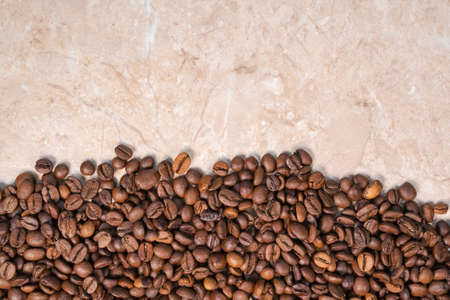Understanding the Grind: Mastering Particle Size
In the world of pour over coffee, the grind is far more than a mere afterthought—its the unsung hero behind every cups clarity and character. British speciality coffee enthusiasts know that mastering particle size is essential for unlocking nuanced flavours and achieving that perfect extraction. A grind too fine, and you risk over-extraction: bitter, astringent notes overshadow the delicate tasting profiles your beans have to offer. Too coarse, and under-extraction leaves your brew thin and insipid, lacking in depth and complexity.
Advanced home brewers across the UK are now investing in premium burr grinders, which allow for meticulous control over grind size. The goal is consistency; each granule should be as uniform as possible to ensure even extraction during brewing. When dialling in your grind for a V60 or Chemex, aim for a texture reminiscent of fine sand—slightly coarser than table salt but not as chunky as breadcrumbs. This balance supports an optimal flow rate and maximises flavour clarity, two hallmarks prized by British coffee aficionados.
Don’t overlook your water source either; Londons hard water or Scotland’s softer profile can subtly alter extraction rates. Many local baristas recommend experimenting with both grind size and water composition to find your sweet spot. For those truly committed to their craft, keep a brew journal noting your grind settings alongside tasting notes—a practice that’s rapidly becoming popular among Britain’s most discerning home brewers.
2. The Art of the Bloom: Unlocking Hidden Flavours
For British home brewers seeking to elevate their pour over ritual, mastering the blooming process is absolutely essential. The bloom, that initial stage when hot water first meets freshly ground coffee, is where much of the magic happens—and where those subtle, nuanced notes so beloved in UK filter culture can be teased out. To go beyond the basics, attention to timing and technique is key. Advanced bloom techniques allow you to unlock hidden complexities and avoid the flat or muddled flavours that can result from a rushed approach.
The Science Behind the Bloom
Blooming releases trapped carbon dioxide from the grounds, which, if not allowed to escape, can repel water and hinder extraction. This step is particularly crucial when using fresh speciality beans sourced from local roasters—a trend increasingly favoured across Britain’s artisanal coffee scene.
Perfecting Your Bloom Timing
Experimenting with bloom duration is an excellent way to coax out specific tasting notes. Here’s a quick reference for advanced timing:
| Brew Style | Bloom Time (Seconds) | Expected Flavour Outcome |
|---|---|---|
| Lighter Roasts | 45-55 | Enhanced floral and citrus notes; crisp finish |
| Darker Roasts | 30-40 | Smoother body; balanced chocolatey undertones |
| Single Origin Beans | 50-60 | Distinct terroir expression; heightened sweetness |
Top Tips for UK Brewers
- Use water just off the boil (around 94°C)—this helps highlight delicate aromas while avoiding bitterness.
- Poor a controlled amount (twice the weight of your grounds) for an even saturation.
- Give your brewer a gentle swirl after pouring to ensure all grounds are evenly wet—think of it as a gentle nudge rather than a full-on stir.
Treating the bloom as a craft in itself allows you to draw out those subtle layers—be it blackcurrant brightness in a Kenyan single origin or nutty undertones in a classic Colombian. For Britons who take pride in both their tea and coffee rituals, this attentive blooming sets the stage for a truly distinctive cup, one that speaks to both precision and pleasure in every sip.
![]()
3. Water Matters: Temperature, Quality and Ratios
If you’ve already perfected your grind size and pour technique, it’s time to turn your attention to water—an often underestimated yet absolutely crucial ingredient in the pursuit of world-class home-brewed coffee. The UK is notorious for its varied water profiles, from the mineral-rich waters of London to the softer flows in Scotland and Wales. Understanding how temperature, quality, and pouring ratios interact with these local nuances can elevate your brew from good to exceptional.
Temperature: Striking the Right Balance
While many guides recommend a standard brewing temperature between 92°C and 96°C, it pays to experiment within this range according to your local tap’s mineral content. Hard water—common in much of southern England—tends to extract flavours more aggressively, so aim for the lower end of the spectrum (around 92°C) to avoid over-extraction and bitterness. Softer water, on the other hand, may benefit from a slightly higher temperature (up to 96°C) to coax out those delicate aromatics without veering into sourness.
Mineral Content: Tailoring Your Approach
The classic British cuppa isn’t just about tea—our tap water tells its own story. High levels of calcium and magnesium can mute or distort coffee’s subtler notes. If you’re in a hard-water region, consider using filtered or bottled water with moderate mineral content (ideally around 50–100 ppm total hardness). This helps preserve clarity while still supporting vibrant extraction. Conversely, if your water is especially soft, adding a pinch of Third Wave Water minerals or experimenting with blends can bring structure and complexity back into your cup.
Pouring Ratios: Precision for Peak Flavour
Serious home brewers know that nailing the ratio of coffee to water is key—especially when accounting for varying water profiles across the UK. For most pour overs, a starting point is a 1:16 ratio (e.g., 18g coffee to 288g water), but don’t be afraid to adjust by a gram or two depending on taste and local water behaviour. With harder water, slightly reducing brew time or using a finer grind can compensate for sluggish extraction, while softer water may reward slower pours and longer contact time for maximum nuance.
Ultimately, treating your water as an essential ingredient—and adapting techniques to suit your postcode—can make all the difference between a passable morning mug and a pour over worth savouring in true British style.
4. The Perfect Pour: Flow Rates and Kettles
Mastering the pour is where home brewers truly set themselves apart, and in Britain’s thriving artisan café scene, the gooseneck kettle has become a hallmark of precision. The right flow rate allows for even extraction, unlocking nuanced flavours that basic brewing simply can’t achieve.
Why Flow Rate Matters
The speed and steadiness of your pour directly influence how water interacts with coffee grounds. A slow, controlled pour ensures consistent saturation, preventing both over-extraction (bitter notes) and under-extraction (sourness). British coffee aficionados often emulate the careful approach seen in independent London roasteries, where every drop is meticulously measured.
Choosing the Right Kettle
Gooseneck kettles are essential for this level of control. Their slender spouts allow you to direct water precisely where you want it, making them a favourite among baristas from Bristol to Edinburgh. Here’s a comparison of popular kettle features:
| Kettle Feature | Benefit | Common UK Example |
|---|---|---|
| Gooseneck Spout | Precision pouring & flow rate control | Hario Buono |
| Temperature Control | Consistent brew temperature | Sage Smart Kettle |
| Ergonomic Handle | Comfort during extended pours | Brewista Artisan |
Pace Yourself: Flow Rate Techniques from British Cafés
Adopt the techniques favoured by Britain’s top baristas: aim for a gentle, spiral motion starting from the centre and moving outwards. Keep your pour steady—ideally around 3–4 grams per second—to mirror best practices in acclaimed cafés like Workshop Coffee or Origin. Pause intermittently to allow for ‘bloom’ and ensure all grounds are evenly extracted, resulting in a cup with remarkable clarity and complexity.
5. Experimenting With Techniques: Bypass and Pulse Pouring
If you’re looking to elevate your pour over skills beyond the standard, it’s time to embrace advanced techniques inspired by British coffee aficionados. Among these, bypass brewing and pulse pouring stand out as essential methods for refining clarity and mouthfeel in your cup. Both approaches require a careful hand and a keen sense of experimentation, but the rewards are worth every effort.
Mastering Bypass Brewing
Bypass brewing is a clever trick favoured by seasoned home brewers in the UK who appreciate nuance. Rather than letting all your water pass through the grounds, you extract a concentrated brew first, then add hot water directly to the final cup. This method allows you to control dilution precisely, giving you a lighter body and brighter clarity without sacrificing complexity—perfect for those who enjoy a more elegant, tea-like finish typical of many modern British cafés.
How to Try Bypass at Home
Brew your coffee with about 70-80% of your intended total water volume. Once extraction is complete, top up your cup with fresh hot water to reach your desired strength. Tinker with ratios until you achieve that crisp, clean profile reminiscent of London’s trendiest coffee houses.
Pulse Pouring for Enhanced Extraction
Pulse pouring is another technique popular among UK specialty coffee enthusiasts. Instead of pouring your water in one continuous stream, you add it in measured pulses or intervals. This allows better control over extraction and temperature stability—factors that contribute to a more balanced and expressive brew.
The Pulse Pouring Method
Pour small amounts of water (typically 40-60g) at regular intervals, allowing each pulse to filter through before adding more. This staged approach gives you greater command over the flow rate and agitation, resulting in a cup with heightened sweetness and refined mouthfeel—a nod to the meticulous standards found in Britain’s best independent cafés.
Refining Your Cup the British Way
Whether you’re an avid home brewer or just keen to explore new horizons, experimenting with bypass brewing and pulse pouring brings you closer to the UK’s cutting-edge coffee scene. Adjust variables patiently, keep notes, and don’t shy away from tasting side-by-side comparisons—the essence of British coffee culture lies in curiosity and refinement. By embracing these advanced pour over methods, you’ll soon find yourself savouring a cup that rivals the best on either side of the Thames.
6. The Finishing Touch: Dialling in to Your Personal Taste
Nothing quite captures the essence of British coffee culture like the ritual of crafting a brew tailored to your own preferences. Once you’ve mastered the advanced pour over techniques, it’s time to celebrate the tradition of the personal cup—a true nod to British individuality and taste. This is where you can truly express yourself, fine-tuning every element from grind size and water temperature to pouring rhythm and extraction time.
Fine Adjustments: Finding Your Signature Brew
Whether your palate leans towards bold, robust notes reminiscent of a strong English breakfast or craves the delicate complexities of a nuanced Ethiopian single origin, dialling in is essential. Start by adjusting one variable at a time—perhaps try a slightly finer grind or tweak your bloom phase by just a few seconds. Keep notes as you go, much like a seasoned barista or an enthusiastic home brewer would.
The British Art of the Personal Cup
There’s no one-size-fits-all recipe here—embrace the British love for uniqueness and tradition. Perhaps you enjoy your pour over with a splash of milk or prefer it black, savouring every subtle flavour note. Don’t be afraid to experiment; after all, part of the joy lies in discovering that elusive sweet spot which makes your daily brew feel like a personal ritual.
Sharing and Celebrating Your Craft
Once you’ve found your perfect method, share it with friends or family—over a leisurely weekend brunch or during a rainy afternoon at home. In true British fashion, invite conversation about taste preferences and brewing quirks. Ultimately, advanced pour over isn’t just about technique; it’s about celebrating the journey towards your ideal cup, one thoughtful adjustment at a time.


